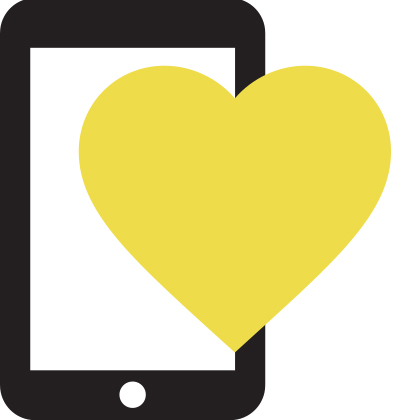 You may remember Francoise Marvel, M.D. Last year, as a second-year resident at Johns Hopkins Bayview, she saw a need: 39 million hospital discharges happen every year in the U.S., and nearly 20 percent of those people wind up back in the hospital within a month. At highest risk during that critical 30 days are heart attack patients.
You may remember Francoise Marvel, M.D. Last year, as a second-year resident at Johns Hopkins Bayview, she saw a need: 39 million hospital discharges happen every year in the U.S., and nearly 20 percent of those people wind up back in the hospital within a month. At highest risk during that critical 30 days are heart attack patients.
At least some of the fault lies in the hospital discharge instructions; these are inconsistent, often written by an intern or medical student and delivered by a nurse, and not terribly user-friendly. It’s a lot of information to absorb in a short period of time, especially to a patient who just wants to get in the wheelchair and be wheeled out to the curb, get in the car, and go home. One study in JAMA showed that only 40 percent of patients over 65 who felt like they had a good understanding of their discharge instructions could describe accurately why they had been hospitalized, and 54 percent did not accurately remember instructions about their follow-up appointment.
No wonder so many people end up back in the hospital. Poor communication can have serious consequences. Many heart attack patients go home with a stent to help keep a clogged artery open, and it is extremely important that they hear these words: You must take aspirin and Plavix, two essential blood-thinning medications. “That stent is very sticky,” Marvel says. “Until the cells grow around it, without those blood thinners it’s almost certain that a clot will form.” These people need to take this medicine every single day and not stop, and “if they don’t do this, they will have a massive heart attack.”
“What our team is accomplishing will be transformative. We represented to the fullest what Hopkins is all about.”
Marvel began developing a prototype of an app that would serve as a discharge navigator. Designed for people who, like most of us, don’t know the first thing about cardiac rehab, the app walks them through the steps: it helps patients follow up with the heart doctor, connect with a pharmacy, social services, and even apply for insurance if they don’t already have it. A key part of the app’s success, Marvel believed, is that patients would start getting familiar with it while they were still in the hospital – avoiding a last-minute flood of confusing instructions.
Apple loved it. This summer, the tech giant invited Marvel and members of Hopkins’ Corrie Health Team including cardiologist Seth Martin, and three tech experts, Matthias Lee, Gavi Rawson, Jal Irani, and Ali Afshar, out to Cupertino, California – to Apple’s Special Projects Office, “the same building where iTunes was created,” Marvel notes – for a week of creative brainstorming and intensive development and design. “By leveraging Apple’s medical app platform, CareKit, and Apple Watch technology, we were able to reinvent inpatient heart attack recovery and outpatient cardiac rehabilitation,” Marvel reports. The collaboration between the Hopkins and Apple teams began strong and throughout the intense week, built “tremendous momentum.”
Together, “we built a truly unique app that will be a comprehensive navigator to help patients recover from a heart attack,” Marvel says. The app evolved to have five major sections:
But wait, there’s more! “We incorporated a ‘smart watch’ component with Apple Watches,” says Marvel. “In fact, Apple donated 200 Apple Watches for our first cohort of patients” for recovering heart attack patients. Using both the app and the Apple watch, patients will monitor their daily steps, their heart rate, set activity goals, and get help staying on track with reminders for medication and follow-up doctor’s appointments.
Apple loved it.
“Words can’t describe our excitement,” she continues. “Apple was so impressed with our development, progress and vision that they arranged for us to meet with Jeff Williams, Chief Operating Officer. He was highly complimentary of our work and plans to make a field trip over to Hopkins and see our clinical deployment of the app in person! What our team is accomplishing will be transformative. We represented to the fullest what Hopkins is about.”